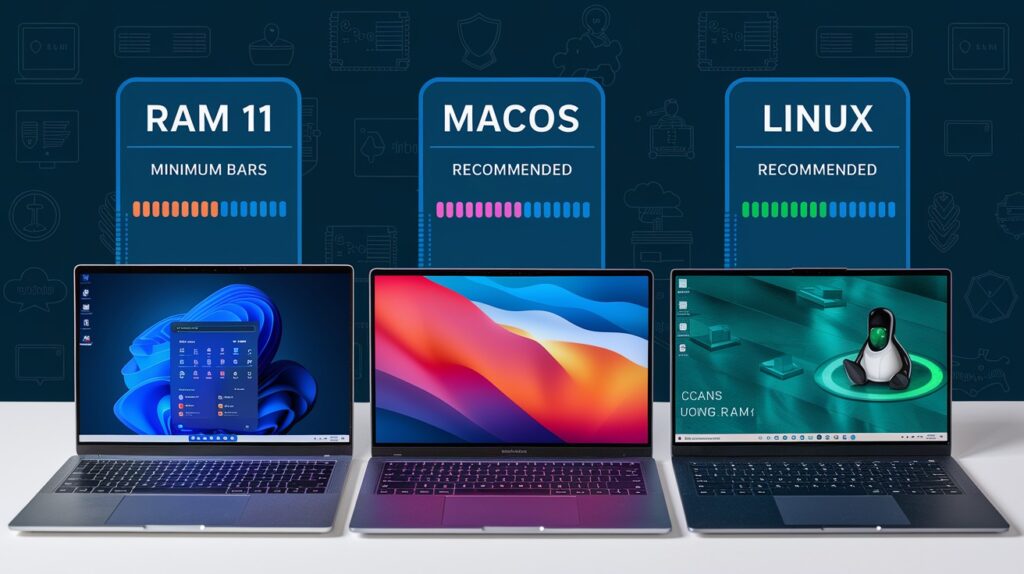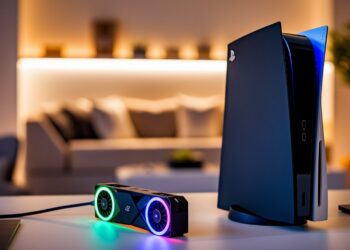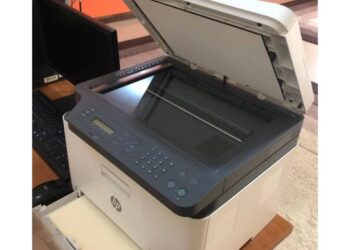Choosing the right amount of memory for your laptop can feel overwhelming with so many options available today.
You’ve probably found yourself wondering, “How much memory should a laptop have?” when shopping for a new device or considering an upgrade.
The answer isn’t one-size-fits-all – it depends entirely on what you plan to do with your machine.
Are you someone who simply browses the web and checks email? Your needs differ drastically from a video editor working with 4K footage or a gamer running the latest titles.
Memory requirements have evolved significantly as software becomes more demanding and multitasking becomes the norm.
Getting this decision right means the difference between a smooth, responsive experience and constant frustration with slow performance.
Let’s explore exactly what you need based on your specific usage patterns and help you make an informed choice that won’t leave you regretting your purchase.
What Is RAM?
RAM (Random Access Memory) serves as your laptop’s temporary workspace where active programs and data live while you’re using them.
Think of it as your computer’s short-term memory that allows quick access to information currently in use.
|
RAM |
Storage (SSD/HDD) |
|
Temporary memory |
Permanent storage |
|
Volatile (data lost when powered off) |
Non-volatile (data retained) |
|
Extremely fast access speeds |
Slower access speeds |
|
Holds active programs and processes |
Stores files, applications, and OS |
|
Measured in GB (4GB, 8GB, 16GB, etc.) |
Measured in GB/TB (256GB, 1TB, etc.) |
Why RAM Affects Performance?
RAM directly impacts your laptop’s ability to handle multiple tasks simultaneously. When you open applications, they load from storage into RAM for faster processing.
More RAM means your system can keep more programs active without slowing down.
Insufficient RAM forces your computer to constantly swap data between memory and storage, creating bottlenecks that make everything feel sluggish.
This explains why adding more RAM often provides the most noticeable performance boost for everyday computing tasks.
Factors That Influence How Much RAM You Need
1. Operating System Requirements

Your operating system sets the foundation for memory needs. Windows 11 requires 4GB minimum, but realistically needs 8GB for smooth operation.
macOS typically demands 8GB as a starting point, while Linux distributions can run efficiently on 2-4GB, depending on the variant.
Background processes constantly consume memory even when you’re not actively using applications.
Windows and macOS reserve 2-3GB for system operations, security scanning, and updates running behind the scenes.
2. Type of User and Use Cases

Casual users checking email, browsing social media, and streaming videos can operate comfortably with 8 GB. Power users juggling spreadsheets, presentations, and multiple browser tabs benefit from 16GB or more.
Gaming demands vary significantly – older titles run fine with 8 GB, while modern AAA games recommend 16 GB.
Creative professionals working with photo editing, video production, or 3D modeling typically require 16- 32 GB.
Programmers running development environments and virtual machines often need similar amounts.
3. Future-Proofing Your Laptop

Software becomes more memory-intensive over time. Applications that run smoothly today may struggle tomorrow with updates and new features.
Investing in extra RAM now prevents performance degradation as your needs evolve.
Check if your laptop supports memory upgrades before purchasing, as many modern laptops have soldered RAM that cannot be expanded later.
RAM Requirements for Different Types of Users
1. For Basic Tasks (Browsing, Email, Word Processing)
Recommended: 4GB-8GB
This range handles everyday computing without breaking your budget. Modern web browsers and office applications run smoothly with 8GB, while 4GB remains functional for light usage.
Basic tasks don’t require intensive memory allocation, making this an economical choice for casual computing needs.
2. For Students and Office Work
Recommended: 8GB-16GB
Students and office workers frequently switch between research tabs, documents, presentations, and communication apps. 8GB provides adequate performance for standard productivity suites, while 16GB offers breathing room for heavier multitasking without performance drops. This range balances capability with cost-effectiveness.
3. For Creative Professionals (Photo/Video Editing, Music Production)
Recommended: 16GB-32GB or more
Adobe Creative Suite applications consume substantial memory when processing high-resolution images and video files.
Photoshop alone can use 8-12GB with large projects. CAD software and Digital Audio Workstations (DAWs) with multiple tracks require similar resources. 32GB becomes essential for 4K video editing and complex creative workflows.
4. For Gamers
Recommended: 16GB-32GB
Modern games like Cyberpunk 2077 and Microsoft Flight Simulator recommend 16GB minimum. Many titles now utilize 12-14GB during gameplay, leaving little room for background applications with only 16 GB. 32GB provides headroom for streaming, Discord, and browser tabs while gaming.
5. For Developers and Engineers
Recommended: 16GB-32 GB+
Development environments, code compilation, and virtual machines demand significant memory resources.
Running multiple containers, databases, and testing environments simultaneously requires 16GB minimum, with 32GB preferred for complex projects and full-stack development.
DDR Types and RAM Speeds: Do They Matter?
DDR3 vs. DDR4 vs. DDR5
|
Feature |
DDR3 |
DDR4 |
DDR5 |
|
Release Year |
2007 |
2014 |
2020 |
|
Typical Speed Range |
800-2133 MHz |
2133-3200 MHz |
4800-6400 MHz |
|
Voltage |
1.5V |
1.2V |
1.1V |
|
Power Efficiency |
Standard |
Better |
Best |
|
Capacity per Module |
Up to 8GB |
Up to 32GB |
Up to 128GB |
|
Compatibility |
Older systems only |
Mid-range systems |
Latest systems only |
|
Cost |
Cheapest |
Moderate |
Most expensive |
|
Availability |
Phasing out |
Widely available |
Growing availability |
RAM Speed (MHz) and Its Real-World Impact
|
Use Case |
Speed Impact |
Recommendation |
|
Basic Tasks |
Minimal difference |
Standard speeds sufficient |
|
Gaming |
5-15% performance gain |
3200+ MHz beneficial |
|
Video Editing |
Moderate improvement |
Higher speeds help with rendering |
|
Programming |
Slight improvement |
Standard speeds adequate |
|
Data Processing |
Significant impact |
Fastest available speeds |
|
Integrated Graphics |
Major improvement |
High-speed RAM essential |
Higher RAM speeds matter most for gaming with integrated graphics, video editing, and data-intensive applications.
For typical office work and web browsing, the performance difference between standard and high-speed RAM remains negligible.
Conclusion
Choosing the right amount of RAM doesn’t have to be complicated once you understand your actual needs.
If you’re doing basic computing tasks, 8GB will serve you well. Students and office workers should consider 16GB for comfortable multitasking, while creative professionals and gamers will want 16-32GB to avoid performance bottlenecks.
Remember, it’s better to have slightly more RAM than you think you need rather than constantly running into memory limitations.
Your laptop will feel faster and more responsive, and you’ll avoid the frustration of programs slowing down when you need them most.
Before making your final decision, check if your chosen laptop allows memory upgrades later.
This flexibility can save you money upfront while giving you room to expand as your needs grow. The right amount of memory makes all the difference in your daily computing experience.
Frequently Asked Questions
Is 8GB RAM enough for Windows 11?
Yes, 8GB handles Windows 11 comfortably for basic tasks, though 16GB provides better multitasking performance and future-proofing.
Can I mix different RAM sizes in my laptop?
Generally, yes, but matching speeds and types works best. Mismatched RAM may reduce overall performance to the lowest common specifications.
Does more RAM improve gaming performance significantly?
Beyond 16GB, gaming improvements are minimal. Focus on graphics card and processor upgrades for better frame rates instead.
How do I check my current RAM usage?
Open Task Manager (Windows) or Activity Monitor (Mac), click the Memory tab to see current usage and available capacity.
Is DDR5 worth the extra cost over DDR4?
For most users, DDR4 provides adequate performance. DDR5 benefits are minimal except for high-end gaming and professional applications.








